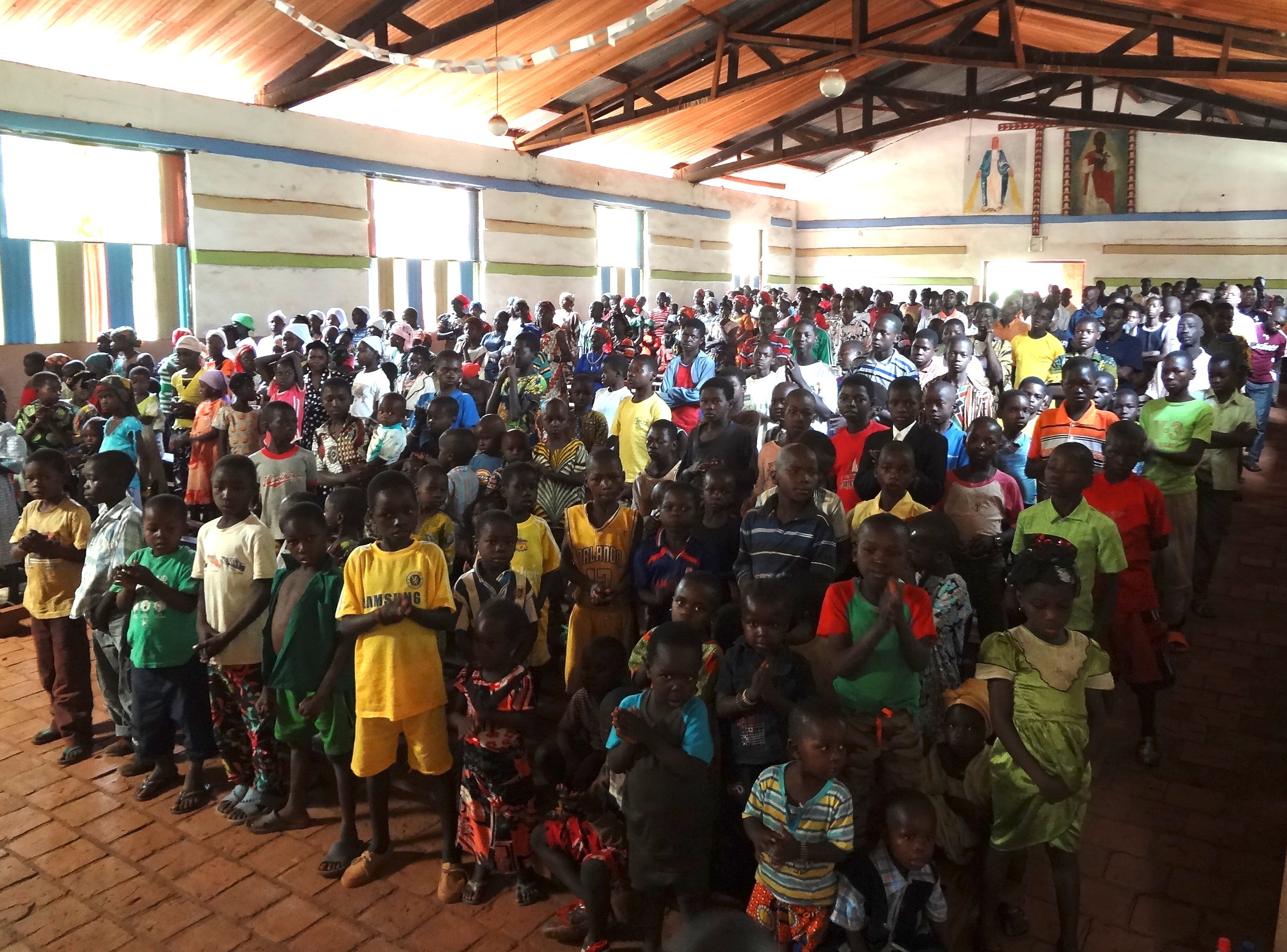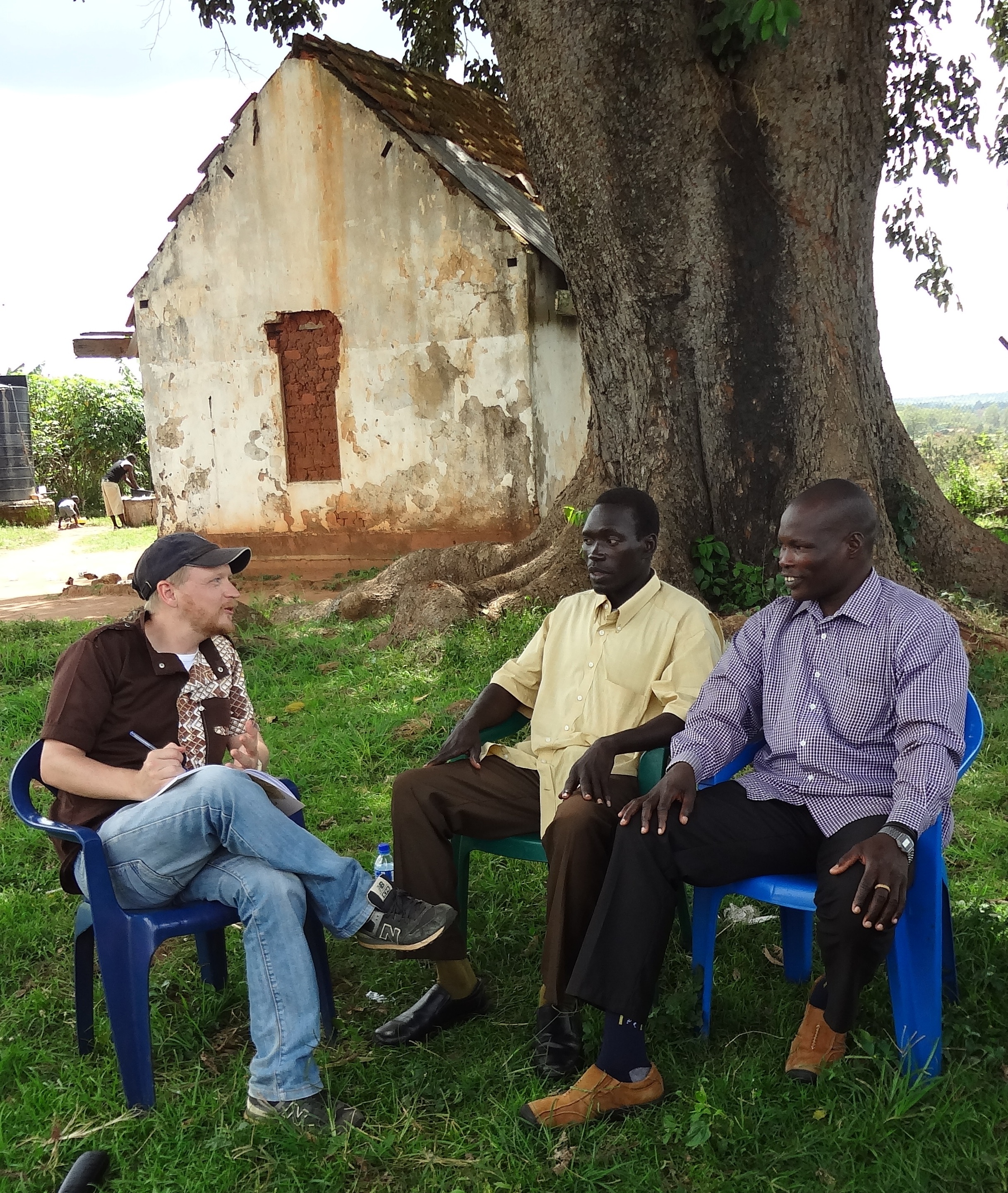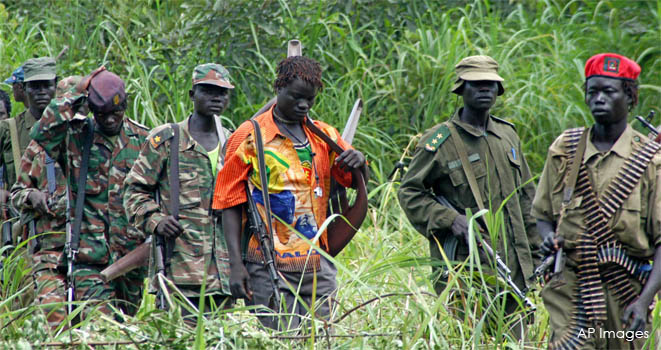
Despite only having about 200 fighters, the Lord’s Resistance Army (LRA) continues to terrorize civilians and communities across central Africa. The LRA command structure continues to revolve around leader Joseph Kony, who controls a force dispersed over an area the size of California that encompasses parts of the Central African Republic (CAR), the Democratic Republic of the Congo (DRC), and an enclave called Kafia Kingi on the border of Sudan and South Sudan.
Kasper Agger, the Enough Project’s Central Africa-based field researcher and LRA expert, recently completed an in-depth regional investigation, traveling across areas where the LRA has been active, and meeting with victims, regional officials, local leaders, aid workers, and ex-soldiers who have escaped or defected from the LRA. As part of Enough’s ongoing interview series, Agger spoke with Greg Hittelman about what he saw, experienced, and learned.
You recently met with a number of former members of the LRA. Talk about that experience.
Yeah sure. It’s always something very special for me to go up to Gulu in Northern Uganda where the LRA rebellion started more than two decades ago. This is where the Ugandan defectors return to, and it was my home for more than two years, back in 2005 when the LRA was still very active in the north. On this trip I went to the Child Protection Unit, which is a short-term reception center for LRA returnees, run by the Ugandan Army. The former members of the LRA stay there for a few weeks until they are reunited with their families. These days there is very little support for those who return from the LRA so they are always eager to tell their story and hope that you can help them directly. Hearing personal stories from the LRA is a very emotional experience. Most former LRA fighters were abducted at a very young age, some of them only five years old and have a gone through horrible experiences, and have lived a life where killings and looting were the order of the day.
Can you share one of those personal stories? 
One of the guys that I talked to had the rank of Second Lieutenant, which is roughly a mid-level commander in LRA. He was abducted from Northern Uganda when he was just ten years old and grew up within the LRA, staying with the group for close to twenty years. He told me that when he was first abducted by the rebels, they would give him “some local medicine” to drink. He said, “This makes you want to stay in the bush only, you do not think about anything else, you even forget home and you don’t feel hungry for many days and your eyes become so sharp like an animal. We also drink the medicine before we go to fight. There are different types of medicine for different missions. If you don’t drink the medicine they [other members of the LRA] will kill you." As he narrated his early experiences of LRA, his eyes flickered and he was moving uneasily in his seat. I decided to take a small break at this point to ease the intensity. He was clearly disturbed by these previous experiences. I walked to my car to pick up some water for him. I crossed the compound of the Child Protection Unit, which is hosted in an old building that had not seen any repairs or maintenance since colonialism. Not a very welcoming place be stuck in after two decades of rebel captivity. I returned to the shade of the massive tree, which was sheltering us from the burning sun. Handed him a bottle of water, and we continued our conversation.
20 years, his whole youth as a soldier. So how did he finally get out of the LRA?
One day when he was going to fetch water from the river, he simply ran away. When he was still new in the LRA, the commanders would never allow them to move alone, but now he could go alone. He tracked through the jungle for almost two months along a river in the Central African Republic. Then one day by coincidence he spotted a group of Uganda Soldiers walking in the distance, along the same river. He waited a bit and then came out with his hands raised above his head, and told them that he wanted to surrender. The Ugandan soldiers were friendly and took him to a small village where he stayed for a few weeks at the military camp, before he was flown back to Uganda.
Is that a common story of escape?
Not really. Most people in the LRA do not have this type of freedom, which is only given to mid-level and senior commanders. Others have to escape at night, or take the chance when there is confusion in their group. Like when LRA groups are attacked by the Ugandan army forces and everyone is running for safety.
How do they know what awaits them on the other side of that life as a fighter?
There is little communication between the LRA and local communities in the areas where they operate. Communication with relatives back in northern Uganda is very rare, too. Fear of the unknown and fear of being killed is a major deterrent for LRA members to escape. Commanders in LRA warn that those who escape from LRA will be arrested or killed by the Ugandan army, once they return back home. This type of propaganda is very strong within LRA. Many in the LRA have a desire to escape, but they don't know how life is outside the LRA. So they stay with the group. They also know that if they are captured trying to escape, they will be punished and likely killed by other members of the LRA.
What programs are in place to support those who are able to escape from an armed group like the LRA?
Almost no programs are available these days. Most organizations have pulled out of northern Uganda and the LRA affected areas in CAR, Congo and South Sudan, while the governments do not have any programs either. There are short-term reception centers, like the Child Protection Unit, and a reception center funded and run by World Vision here in Gulu. But long term support is completely lacking. In addition to my work at the Enough Project, I’m also co-founder of the Grassroots Reconciliation Group, which is seeking to bridge this gap by providing long-term support to LRA defectors and local communities in northern Uganda. We provide counselling to help people heal from mental trauma, and we help them with economic rebuilding through farming and small business support. But most importantly, the people work together in a group, which build relations between local communities and former LRA fighters, helping to reduce stigma and isolation.
The LRA started as an insurgency in Uganda in 1987. Since then they've morphed into a transnational phenomenon. Where are they now?
 The LRA moved out of Uganda during 2006 largely because of military pressure from the Ugandan army and because of the peace agreement that ended the war between north and South Sudan. The LRA had long been a proxy rebel group for the government in Khartoum to fight secessionist rebels in the south. The LRA is now active in the border region between the Democratic Republic of Congo and the Central African Republic, stretching along eastern border in CAR all the way up to southern Darfur, where we believe that rebel leader Joseph Kony is hiding out.
The LRA moved out of Uganda during 2006 largely because of military pressure from the Ugandan army and because of the peace agreement that ended the war between north and South Sudan. The LRA had long been a proxy rebel group for the government in Khartoum to fight secessionist rebels in the south. The LRA is now active in the border region between the Democratic Republic of Congo and the Central African Republic, stretching along eastern border in CAR all the way up to southern Darfur, where we believe that rebel leader Joseph Kony is hiding out.
What have you recently learned that's maybe less well-known about the current activities of the LRA?
I'd say that the group’s involvement with the gold and diamond trade is something new and less known. We've not seen the LRA doing this previously. Some of the former LRA members that I talked to told me that Kony issued standing orders to bring him gold and diamonds. They also told me that they have been trading the minerals for weapons, ammunition, medicine, batteries and other supplies that are difficult to get in the jungle, where they operate. They mostly trade with transnational cattle herders or with members of the Central African rebel group, Seleka and with people that are close to their old ally, the Sudanese military in south Darfur.
A team of US commandos has been on the hunt for the LRA.
Yes indeed. The US sent close to 100 military advisors to central Africa in late 2012 to help African Union forces from Uganda, Congo, South Sudan and CAR in their fight against the LRA. The US is providing logistical support in the form of helicopters, they do military training and help with surveillance equipment to produce better intelligence about LRA movements. The US has also helped to implement programs that motivate defections from the LRA. They are dropping fliers with come-home messages, they are doing radio broadcastings and have set up Safe Reporting Sites across the jungle where LRA fighters can surrender peacefully. How effective are these efforts? Largely, their joint-efforts with African partners have been successful. The number of LRA attacks and killings are down by almost 90% since the Americans arrived. But the core command structure remains mostly intact and unless we see the capture of Kony, the group maintains capacity to rebuild.
How do people think Kony has been able to evade capture all this time?
Well, it might seem like a puzzle from the outside, but when you get into the details of how the LRA operate, the remoteness of the areas where they hide, and the limited capacity of those forces that are fighting the group, then you realize that it’s a very tough job to get Kony and bring a final end to the LRA. First of all, he is hiding in the border area between South Darfur and northern CAR, which is controlled by groups that are relatively friendly to the LRA, the Sudanese military and the Seleka rebels. The Ugandans and the Americans can't easily operate in those areas. Secondly, the LRA are very aware that many are looking for them, so they try to avoid large scale attacks and killings, which would draw attention to their location. They operate in small groups with 10-15 members and are highly mobile. Finally, the areas where they hide are basically one big jungle where they can hunt, find wild fruits, and with almost no infrastructure. One Ugandan soldier once told me, “If you want to capture LRA then you have to live like the LRA." Few soldiers are willing or able to walk up to 50 kilometers a day, live off the land, and not getting any rest for months.
Why are these other groups supporting and protecting the LRA?
They all benefit from mutual trade with ivory, diamonds and gold. Many of those groups that operate in such isolated areas, they eventually find ways to cooperate against the outside world in a common interest to protect their territory and livelihood, or they end up fighting. Such relationships can change rapidly, and often come down to personal relationships that build over long periods of time.
Do you have a sense that the leaders and members of the LRA have a political or social agenda?
The LRA started out with a clear ambition to overturn the Ugandan government, but have gradually turned into something that resembles a criminal gang, without much of a political agenda. The leaders of LRA have plans and missions, but they are not trying to hold any territory or trying to attack military forces. They prefer light targets like civilians. Their main mission is basically to survive in the jungle. They fear what will happen if they surrender, as we talked about earlier.
Is the LRA less or more dangerous today?
The LRA is clearly less dangerous today than, let's say three to five years ago. But let's not be mistaken, the LRA is responsible for weekly attacks on civilians, they’ve abducted close to 500 people this year alone and roughly 160,000 people are displaced because of the LRA. The group also maintain capacity to do large scale killings, though we've not seem this the past few years, but it’s certainly a possibility. Very few forces are deployed to the LRA affected areas.
So what does that mean for the people living in these areas?
If a group of LRA fighters went into one of these very remote and vulnerable villages deep in the jungle then there would be no one to protect the local people.
To learn more, read the 2014 LRA brief by the Enough Project, The Resolve, and Invisible Children.
Photo credits top to bottom:
-Children gather in a community center in an LRA-affected area. (Kasper Agger/Enough Project)
-Enough Project Field Researcher Kasper Agger speaks with recent LRA defectors who spent more than ten years with the rebel group. Gulu, Northern Uganda, October 2014. (Enough Project)
-LRA combatants travel through the bush near the Dungu region, DRC. (AP Images)

